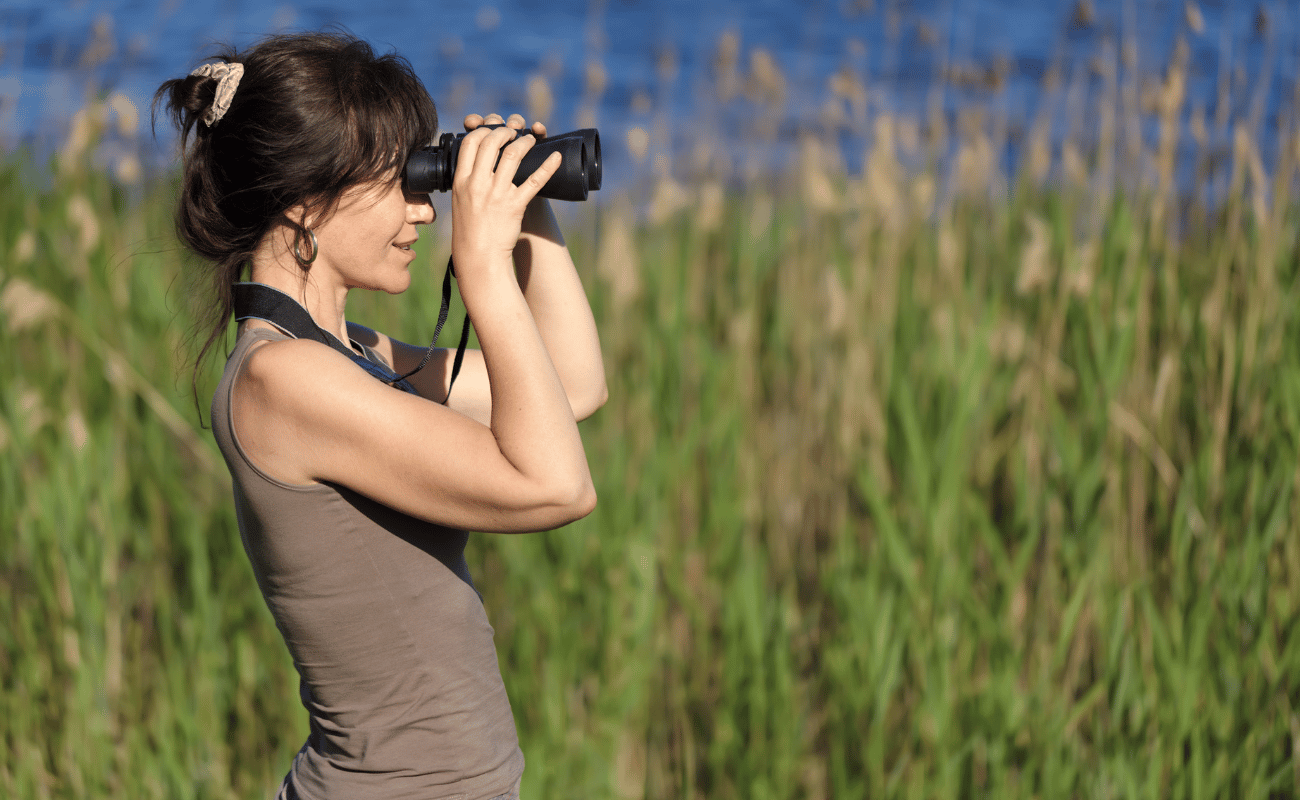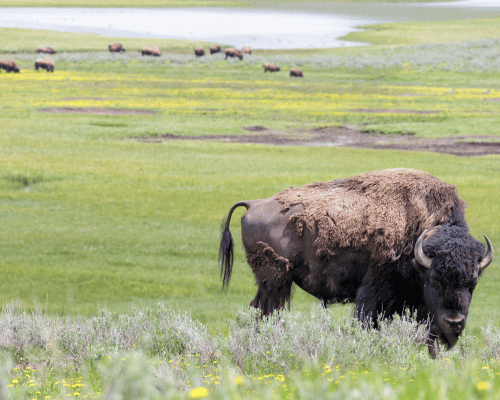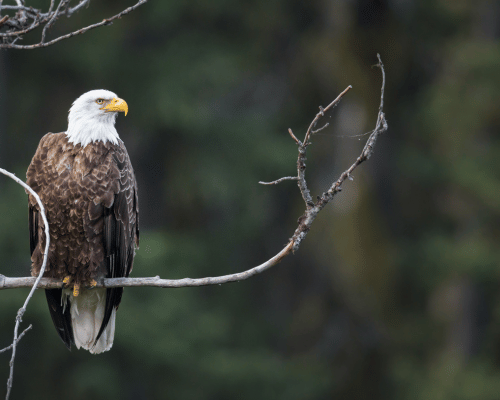The Best Time to Visit the Teton Wildlife Tours: A Guide to Seasonal Wildlife Viewing

Welcome to Teton Wildlife Tours! As an expert guide, I am excited to introduce you to the beauty and wonder of the Teton area. In this guide, we will explore the best times to visit for wildlife viewing, so you can maximize your chances of encountering the incredible species that call this area home. Knowing when to visit is crucial to ensure that you witness the diversity and abundance of wildlife that this area has to offer. So, let’s get started!
When viewing spring wildlife, it’s essential to keep a safe distance from the animals, especially if you encounter a mother with her young. Always bring binoculars or a spotting scope to observe from a safe distance. Additionally, be sure to stay on designated trails and follow park regulations to ensure the safety of both you and the wildlife.



Overview of wildlife species seen in summer
Highlights of summer wildlife viewing in the Teton area
I. Spring Wildlife Viewing
Spring is a fantastic time to visit the Teton area for wildlife viewing. As the snow melts and the weather warms up, the area comes alive with an abundance of wildlife. During this time, you may be lucky enough to spot black bears and grizzly bears emerging from their winter hibernation. Moose, elk, bison, and deer can also be spotted grazing in the valleys and meadows, while bald eagles and other birds of prey soar above.
For the best spring wildlife viewing, I recommend visiting during late April and early May. This is when the animals are most active after a long winter, and the vegetation is just starting to grow, making it easier to spot them. The early morning and late evening are also the best times to view wildlife, as the animals tend to be more active during these times.
II. Summer Wildlife Viewing
Summer is one of the best times to visit the Teton area for wildlife viewing, as many animals are out and active during this season.
Summer wildlife
Best places and times to view summer wildlife:
Tips for summer wildlife watching
By following these tips, you can enjoy the amazing summer wildlife viewing opportunities in the Teton area while also practicing responsible wildlife watching.
Fall Wildlife Viewing
Fall is a spectacular time to visit the Teton area for wildlife watching as many animals prepare for the winter season. Here are some highlights of fall wildlife viewing.
Fall species overview
Overview of wildlife species seen in fall:
Best places and times to view fall wildlife:
Oxbow Bend, where elk and moose frequently gather.
Antelope Flats Road, a popular spot to view bison, moose, and pronghorn.
Wildlife viewing tours with knowledgeable guides who know the best places to spot wildlife in fall.
Tips for fall wildlife watching:
Winter Wildlife Viewing
Winter in the Teton area offers unique opportunities for wildlife viewing. Here are some of the highlights:
Overview of wildlife species seen in winter:
Moose: During the winter months, moose come down to lower elevations in search of food.
Elk: Elk gather in large herds during the winter and can often be seen in open meadows or along the National Elk Refuge.
Bighorn Sheep: Bighorn sheep move to lower elevations in search of food during the winter, making them easier to spot.
Wolves: Winter is a great time to spot wolves in the Teton area as they move to lower elevations in search of prey.
Birds: The Teton area is a popular destination for birdwatching during the winter months. Visitors can spot bald eagles, golden eagles, and a variety of owls.
Best places and times to view winter wildlife:
National Elk Refuge: The refuge is a prime location for viewing elk during the winter months.
Gros Ventre River: Moose are often spotted along the Gros Ventre River during the winter.
Lamar Valley: This area of Yellowstone National Park is known for its wolf sightings during the winter months.
Teton Village: Bighorn sheep can often be spotted along the roadside near Teton Village during the winter.
Tips for winter wildlife watching:
Choosing the Best Time for Your Teton Wildlife Tour
When planning your Teton Wildlife Tour, it’s essential to consider several factors that can influence the best time for your visit. The factors include your wildlife interests, weather preferences, and seasonal availability of different species.
If you are interested in seeing bears or moose with their young, the best time to visit would be in the spring, as they are usually born in late April or May. If you want to observe baby bison or elk calves, the best time to visit would be in late spring or early summer. On the other hand, if you want to see the annual elk rut or the moose during their mating season, the best time to visit would be in the fall, around mid-September to mid-October.
Weather is another significant factor to consider. If you enjoy milder temperatures and more extended daylight hours, summer and early fall would be the ideal seasons to visit. In contrast, if you prefer colder temperatures and the possibility of witnessing winter wildlife activities like wolves hunting, bighorn sheep butting heads, and bison and elk in the snow, then winter would be the best time to visit.
Based on these factors, we recommend the following times for the best wildlife-viewing experience:
- Spring (late April to early June): for bears, moose with their young, bison and elk calves, and birdwatching.
- Summer (late June to August): for bison and elk, birdwatching, and wildflowers.
- Fall (mid-September to mid-October): for the annual elk rut, moose during their mating season, and birdwatching.
- Winter (December to March): for wolves, bison, elk in the snow, bighorn sheep, and birdwatching.
It’s important to note that wildlife behavior and the timing of their activities can vary from year to year due to weather conditions and other factors. We recommend consulting with a local wildlife expert or a Teton Wildlife Tours guide to get the most updated information before planning your trip.
Conclusion
In conclusion, planning a Teton Wildlife Tour at the right time is essential for a successful and memorable wildlife viewing experience. From the arrival of migratory birds in spring to the majestic elk rut in fall, each season offers unique opportunities to witness the diverse wildlife in the area. By considering factors such as weather, animal behavior, and personal interests, visitors can choose the best time for their wildlife tour. We encourage readers to plan their visit accordingly and join us in the Teton area to witness the beauty and wonder of the local wildlife.




